Spanish Travel Memories 2 - David in Granada
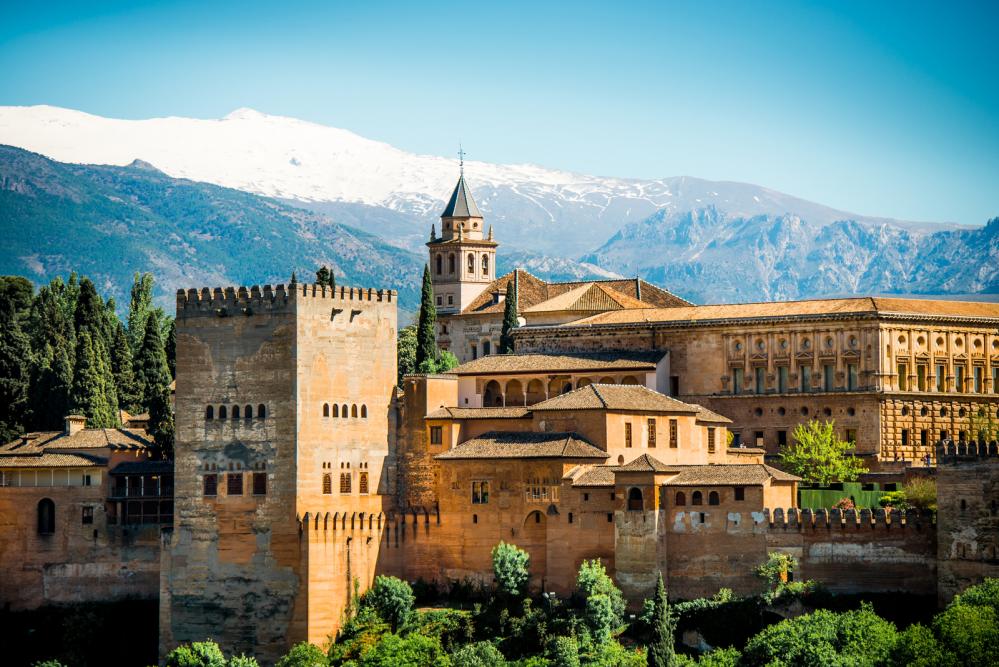 The Spanish Travel Memories add to the information that our Spain traveler David picks up in our GamesforLanguage travel-story courses.
The Spanish Travel Memories add to the information that our Spain traveler David picks up in our GamesforLanguage travel-story courses.
In the courses, we use street names, neighborhoods, hotels, and restaurants - many of which we've explored ourselves - in each of the Spanish cities. In Spanish Travel Memories 1, we tell you more about Barcelona. After visiting his aunt and uncle there and exploring the city, David heads south to Granada.
If you're going to visit Spain, you wouldn't want to miss Granada. It's a fascinating city with a multicultural history, and certainly a place for travel memories. We're also listing a few basic words and phrases in Spanish that will help you to communicate locally. The word lists are a combination of words and phrases taught in the course and other useful travel terms.
Just as we did with our post about Barcelona, we'll follow David's discoveries in Granada. For those of you who have done or are doing our Spanish 1 course: David en España, this may be of special interest.
Quick Facts about Granada
The city of Granada is the capital of the province of Granada, one of the eight provinces in the autonomous community of Andalusia. The city proper has a population of over 236,000. Granada has a great location. It lies close to the Sierra Nevada mountain range, and is only about an hour by car from the Mediterranean coast.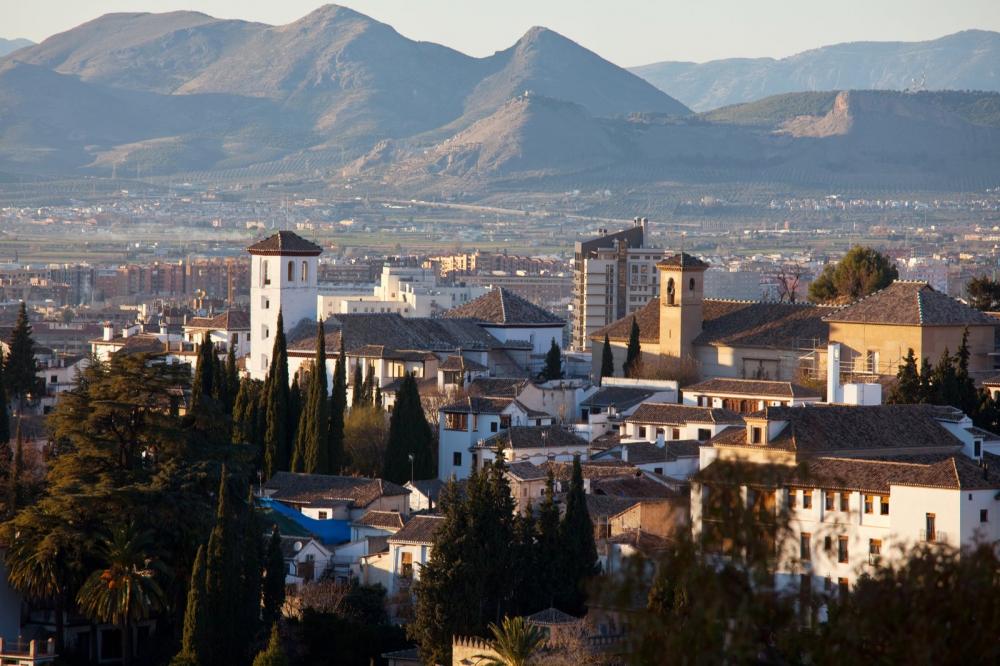
The name "Granada" may come from either the Spanish word for "pomegranate" (granada) or from the Arabic word said to mean "hill of strangers".
In its early history, the region of what is now Granada was the site of an Iberian settlement, Elibyrge, (5th century b.c.), and of the Roman town Illiberis (150 b.c.). During the reign of the Visigoths (500 a.d.), a small community of Jews who had also settled there, named the area Garnata al-yahut.
In 711, a Moorish Caliphate invaded and conquered Granada. After internal conflicts among Arab clans, the Ziries clan created an independent kingdom, which lasted from (1013-1238).
This was followed by the powerful Nazrid dynasty (1238-1492). It was during the reign of the Nazrid kingdom, that the Alhambra fortress and the Generalife palace were built. Granada was the last Muslim kingdom to be conquered by the Catholic Monarchs Ferdinand and Isabella in 1492.
Basic Words and Phrases
- the mountain range - la sierra
- snow-covered, snowy - nevado/a (adj.)
- the coast - la costa
- the pomegranate - la granada
- the settlement - el asentamiento
- the dynasty - la dinastía- Catholic Monarchs - Reyes Católicos
Train to Granada
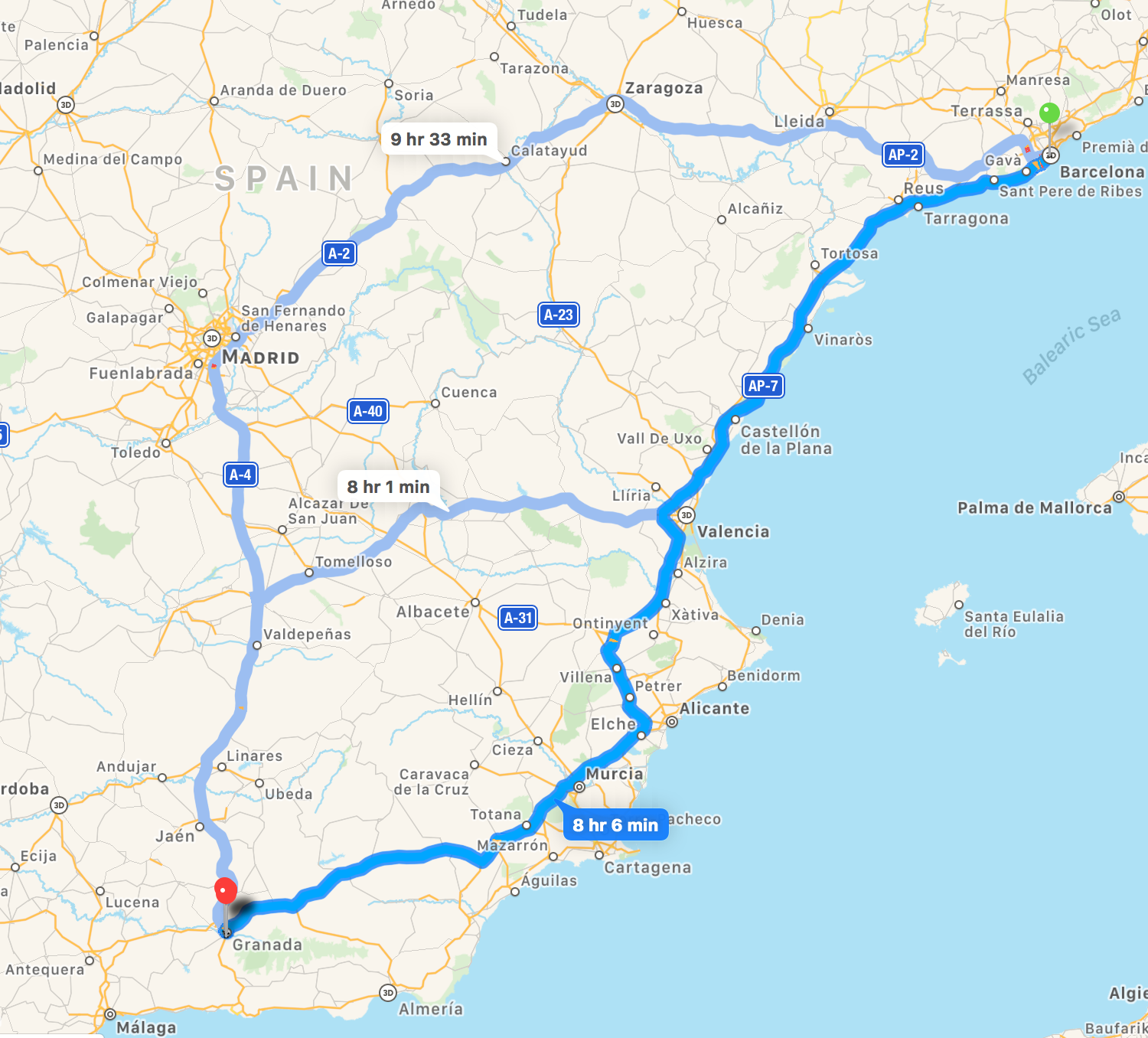 The distance between Barcelona (located in the northeast of Spain) and Granada (in the south) is 425 miles. Rather than fly to Granada, David chooses the less expensive option. He takes the train, which in his case is the Arco train with a route along the eastern coast.
The distance between Barcelona (located in the northeast of Spain) and Granada (in the south) is 425 miles. Rather than fly to Granada, David chooses the less expensive option. He takes the train, which in his case is the Arco train with a route along the eastern coast.
Side Note: Obviously, train schedules and routes change over time. The Arco train to cities in Andalusia, operated by RENFE (Red Nacional de los Ferrocarriles Españoles), has been replaced by their AVE trains with somewhat different routes.
The map above shows the driving options, which also mirror the train routes quite closely. The train route via Madrid may be faster.
Once he arrives in Granada, David asks for directions to “la calle Reyes Católicos,” the street where his friend Daniel lives, in the center of town. From the train station it's about a three-mile walk. (There's also an easy bus connection.)
Basic Words and Phrases
- the train station - la estación de tren
- the distance - la distancia
- he train schedule - el horario de trenes
- the train ticket - el billete de tren
- the (train) track - la vía
- to wait - esperar
- a seat by the window - un asiento en la ventana
- Is this seat available? - ¿Está este asiento todavía libre?
Washington Irving and the Alhambra
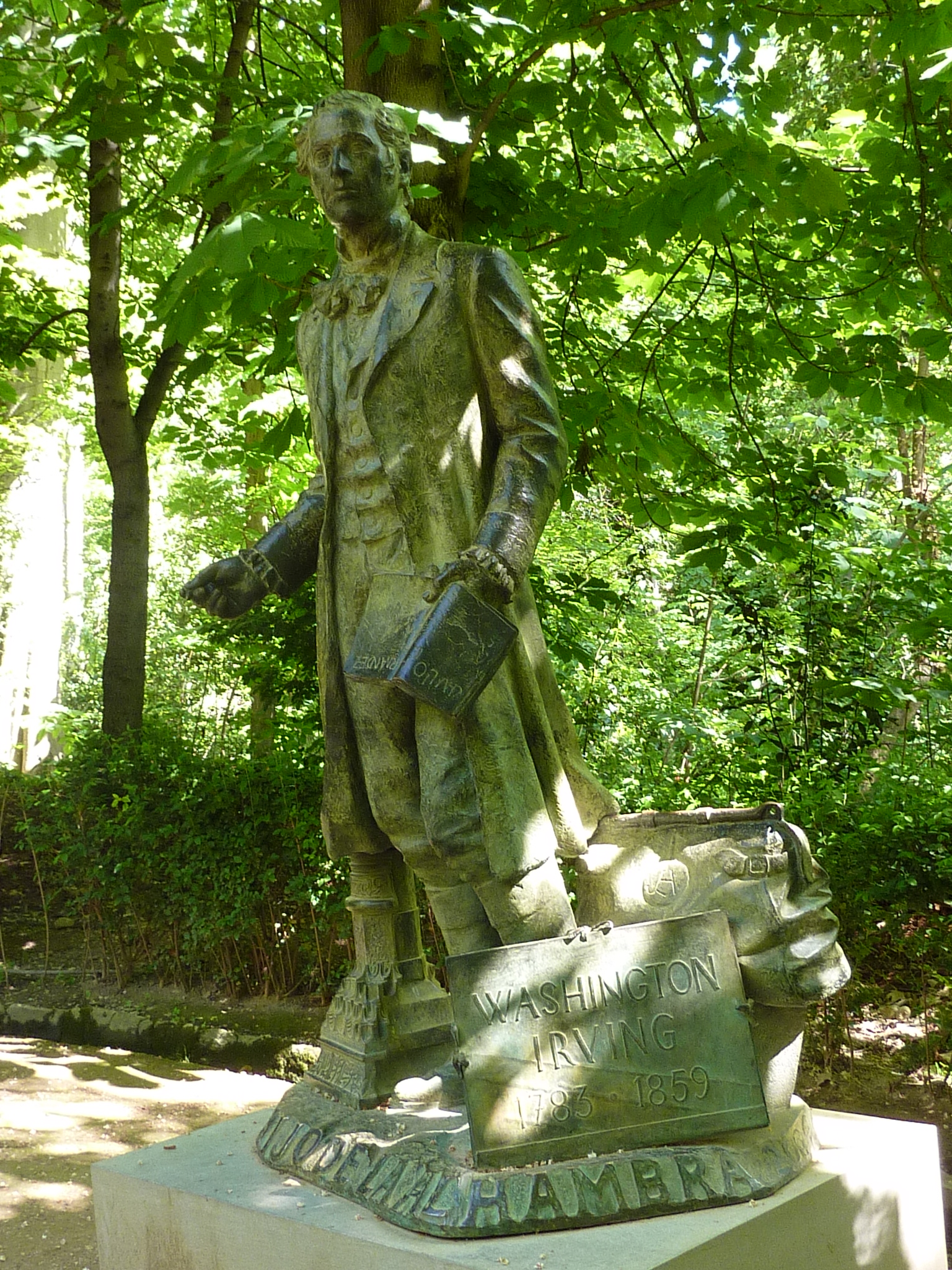 The Alhambra ("the red" in Arabic) is a spectacular palace and fortress built between 1238 and 1358 during the Moorish Nazrid dynasty. It stands on a plateau overlooking the city of Granada. You can read up more on its history HERE.
The Alhambra ("the red" in Arabic) is a spectacular palace and fortress built between 1238 and 1358 during the Moorish Nazrid dynasty. It stands on a plateau overlooking the city of Granada. You can read up more on its history HERE.
We were surprised to learn that the American writer Washington Irving (1783-1859) had actually lodged in a room in the Alhambra palace for three months in 1829. During that time he began his "Tales of the Alhambra," a colorful mixture of local history and legend. There's a plaque in the room where he stayed.
On the way down through the gardens, you can see a statue of Irving, which commemorates the 150th anniversary of his death. Downtown, there's also a street named after him.
Basic Words and Phrases
- the palace - el palacio
- a palatial complex - un complejo palaciego
- the writer (m/f) - el escritor, la escritora
- the tale, story - el cuento
- the plaque - la placa
- the garden - el jardín
- the statue - la estatua
Side note: The city of Alhambra in California is reportedly named after the "Tales of the Alhambra." In 1874, the daughter of Benjamin Wilson, a wealthy developer, was reading the book and encouraged him to use the name for his new suburban development in Los Angeles County.
University of Granada
Founded in 1531 by emperor Charles V, the University of Granada is one of the oldest in Spain and continues a long educational tradition that goes back to the time of the Moorish epoch. With over 50,000 students in Granada alone (and seven campuses, five in Granada, and two in Spanish territories in Northern Africa), the University of Granada is the one of the largest in Spain.
The university is also highly popular with students of Erasmus, a program adopted by the European Commission in 1987, to encourage and support student exchanges throughout the European Union.
Side Note: The Erasmus Program was named after the Dutch philosopher and scholar, Erasmus of Rotterdam (1466-1536). At the same time, ERASMUS also stands for: European Region Action Scheme for the Mobility of University Students.
Mirador de San Cristóbal
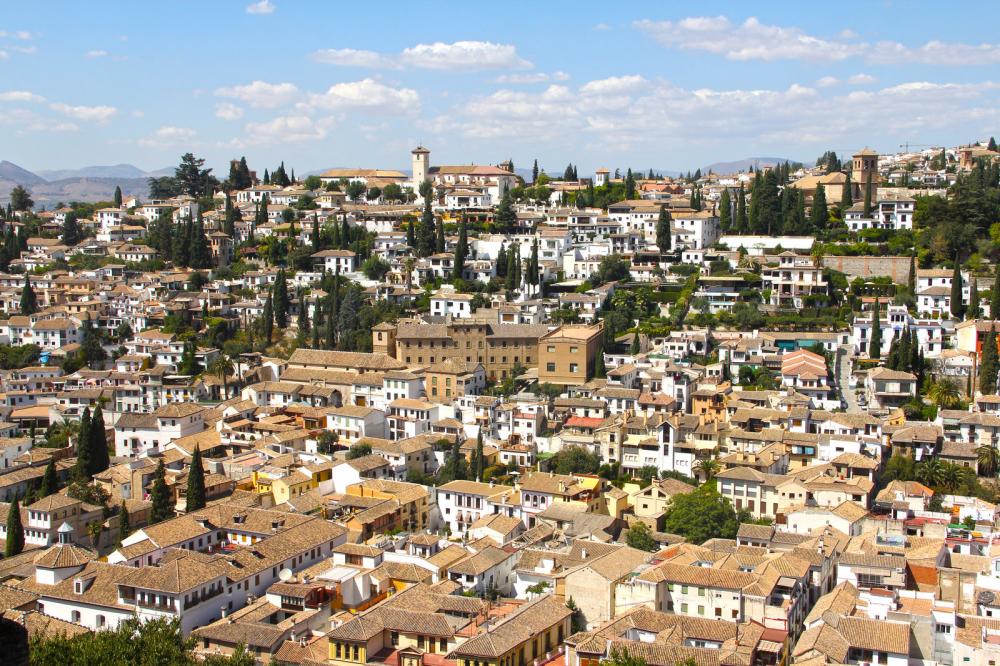 The San Cristobal Viewpoint is in the picturesque Albaicín neighborhood of Granada. From the viewpoint you have a stunning panoramic view of the city, including a side view of the Alhambra and the snow-peaked mountains behind. El Albaicín has maintained the narrow winding streets and the architecture of its Moorish past. It was declared a World Heritage Site in 1984, together with the Alhambra.
The San Cristobal Viewpoint is in the picturesque Albaicín neighborhood of Granada. From the viewpoint you have a stunning panoramic view of the city, including a side view of the Alhambra and the snow-peaked mountains behind. El Albaicín has maintained the narrow winding streets and the architecture of its Moorish past. It was declared a World Heritage Site in 1984, together with the Alhambra.
(We recently came across this Post "Ask an Expat: Living in Granada, Spain" by Nina Bosken, who describes her experience teaching and living in Granada. And to fill out the picture of Granada, read this New York Times Travel Dispatch In Spain, Secrets and a Possible Betrayal!)
David's next Stop (and future Spanish Travel Memories 3)
From Granada, David takes the train to Seville for more travel memories. There he checks into a hotel his friends had recommended to him. He explores the Toro del Oro and the Almohad Tower, called La Giralda. Together with Ana and some of her friends he spends an evening in Triana, the neighborhood known for flamenco dancers and singers.
Register or log in again and continue with the Spanish 1 course.
Bio: Ulrike Rettig is the co-founder of GamesforLanguage.com. She is a lifelong language learner, growing up in Austria, the Netherlands, and Canada. You can follow her on Facebook, Twitter and Instagram, and leave any comments below or with contact.
